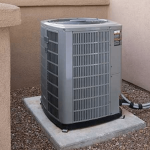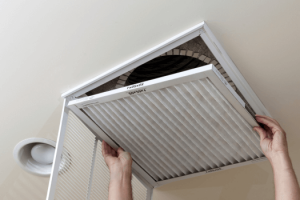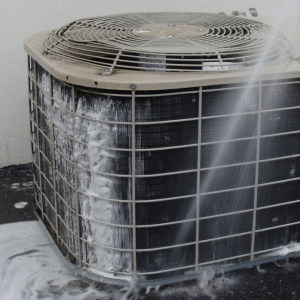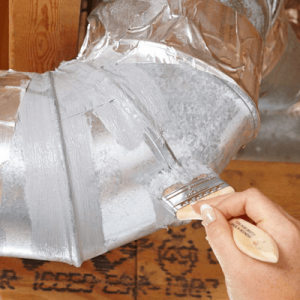HVAC Repair Service in Gilbert, AZ


HVAC Company Profile
If you have enjoyed top-of-the-line service, value and professionalism from a local AC repair service in Gilbert, AZ please use the form below to suggest them for the category “Best AC repair Gilbert AZ”. This community directory is a collection of locally recommended businesses that are sensational when it comes to satisfying their customers. Only Gilbert AC repair services that have been referred by local contributors will be considered for addition into the category “Best AC service Gilbert AZ”. Read More
To qualify for a listing every air conditioning service must score 90% or greater in customer satisfaction and pass all credential requirements. Thank you for helping our community recognize the best companies that provide AC repair in Gilbert AZ.

Heating and Air Conditioning Services Offered:
Air Conditioning Services
- AC Installation
- AC Repair
- AC Maintenance
- AC Troubleshooting
Air Quality Services
- Air Purifiers
- Air Duct Repair & Modifications
- Humidifiers
- Temperature Zoning
Commercial Service
- HVAC Maintenance
- HVAC Repair
HVAC Comfort Control Services
- Programmable Thermostat
- Smart Thermostat
- Wi-Fi Thermostat
Heating Services
- Heat Pump Installation
- Heat Pump Repair
- Heat Pump Maintenance
Mini Splits & Ductless Systems
Serving Gilbert, AZ & The Entire East Valley:
Ahwatukee
Chandler
Gilbert
Mesa
Tempe
HVAC Company Details | |
| Website | |
| Phone Number | |
| Form Below | |
| Hours | Mon-Fri |
| Sat-Sun | |
| Service Area | East Valley |
| Insurance | |
| Manager | |
| Years In Industry | |
| Number of Employees | |
| License Number | ROC # |
| Founded | |
| Key Brands | |
| Customer Type | Residential – Commercial |
| SIC Code | 17110400 |
| SIC Description | Heating and Air Conditioning Contractors |
Frequently Asked Questions & Answers
Q: What is SEER rating?
A: SEER is an acronym for Seasonal Energy Efficiency Ratio. It is a rating that expresses a heat pump or AC unit’s energy efficiency. A SEER number is calculated by dividing the annual cooling output of an AC unit during a cooling season by the electrical energy used by the unit during the same season. This gives air conditioners that use less power to deliver the same cooling output a higher SEER number or a higher efficiency rating.
If you have an older air conditioner, you may discover that your AC unit has a SEER rating of 10 or lower. While air conditioning companies can still access parts for air conditioning repair services on these AC units, they are no longer available for new installations.
- In 2006 the U.S. Department of Energy raised the lowest SEER rating for a new air conditioning installation from 10 SEER up to 13 SEER to increase national energy conservation.
- In 2015 the Department of Energy increased the minimum SEER rating for a new air conditioning installation to 14 SEER for specific South and Southwest regions of the country, including Arizona.
If you’re thinking it’s time for a new air conditioning installation remember that a higher SEER rating means lower electric bills.
Q: What is HVAC?
A: HVAC is an acronym that represents the 3 main functions of a mechanically engineered system that manages the thermal comfort and air quality within an enclosed area. Read More
Heating
Defined as a device or system that is used to heat a building. There are 2 types of central heating systems:
- Furnaces: A furnace is an enclosed chamber where heat is created through the burning of fossil fuels or the energizing of electric heating elements (similar to the coils that get red hot in a toaster). This heat gets transferred into a plenum box where the air gets heated for distribution. Furnaces only produce heat.
- Heat Pumps: This is the most common type of central heating in housing. Heat pumps provide both heating and cooling by switch between functions depending on the temperature. Unlike a furnace, heat pumps do not generate heat – they transfer heat from one area to another. In the heating mode, heat pumps absorb heat energy from the outside air (even in colder temperatures) and transfer it to the air inside. This is done by reversing the flow of refrigerant, which absorbs and rejects heat as it changes from a gas to a liquid.
Ventilation
This is the function of an HVAC system that exchanges the air in a space with air the has had its temperature altered. Ventilation distributes the “conditioned” air to enclosed areas through supply ducts. As it’s supplying air into an area, it is pulling air out of the area where it is cleaned by an air filter. This process keeps exchanging and cleaning the air with every cycle.
Air Conditioning
 This is the function of an HVAC system that removes heat from an enclosed area to cool it.
This is the function of an HVAC system that removes heat from an enclosed area to cool it.
The Basic Principles of Air Conditioning:
All air conditioners use a closed loop cycle of compression, condensation, expansion, and evaporation where the refrigerant is changed back and forth from a gas to a liquid.
- Refrigerant absorbs heat when changed from liquid to gas
- Refrigerant gives off heat when changed from gas to liquid.
The refrigerant gets processed over and over as it moves heat from one area and expels it to another area. This is how the process works:
- The refrigerant arrives at the compressor in the form of a low-pressure gas where it get compressed into a high-pressure gas.
- The high-pressure gas flows to the condenser where the gas gets condensed into the form of a high-pressure liquid and heat gets expelled to the air outside.
- The high-pressure liquid gets sent to an expansion valve where the pressure gets reduced and the refrigerant becomes a low-pressure liquid.
- The low-pressure liquid refrigerant gets sent to an evaporator where it changes from a low-pressure liquid into the form of a low-pressure gas and heat gets absorbed.
- This cycle repeats itself as the refrigerant (now a hot low-pressure gas) gets sent back to the compressor.
The refrigerant follows this path repeatedly as it absorb heat from within a space and expels it into the air outside. When a heat pump is called on to deliver heating, the process is reversed.
In larger buildings, these HVAC functions are often controlled by sophisticated energy management systems. In residential and smaller commercial applications, these HVAC operations are controlled by thermostats.
« « Artificial Grass | Appliance Repair » »
More On AC Repair & HVAC Maintenance Service
Did you know that air conditioning and heating can account for greater than 50% of your monthly household electric bill? It is the largest user of power in your home, so it make good economic sense to make your AC unit as energy efficient as possible. While a new highly efficient central heating and air conditioning installation could save you considerable energy, there are several “DIY” repair and maintenance solutions. If you’re looking for ways to lower your utility costs, check out these easy air conditioning repair and HVAC maintenance tips.
3 Simple Air Conditioning Repair And HVAC Maintenance Tips Every Homeowner In Gilbert, AZ Should Know:
1. Replace Dirty Air Filters
Dusty air filters diminish air flow and make your air conditioner work harder. This will increase AC run times, escalate power consumption and accelerate the need for residential HVAC repair services. Swapping them out every 3 months during the winter and every 30 days in the summer is a good rule of thumb. Replacing your filters is pretty simple. The assistance of an air conditioning service technician is not required, just verify that the arrows are going the right way.
2. Clean Your Air Conditioner’s Condenser Coil and Cooling Fins
 Your condenser unit holds the cooling fins, condenser coil, a fan and compressor. It’s located outside either on top of your roof or on an equipment pad in your yard. Its role is to expel the heat from the air inside that has been collected in the coolant.
Your condenser unit holds the cooling fins, condenser coil, a fan and compressor. It’s located outside either on top of your roof or on an equipment pad in your yard. Its role is to expel the heat from the air inside that has been collected in the coolant.
The condenser fan blows air over and around the cooling fins and condenser coil. If these cooling fins get gummed up with grass, leaves and dirt your AC unit is going to need to run longer to eject the heat absorbed in the coolant. On especially hot days, this unsatisfactory air circulation can cause your air conditioner to overheat making repairs necessary.
Several nearby HVAC companies perform this maintenance service; however, cleaning these fins is pretty simple.
You will need these items:
- AC coil cleaning foam
- Hose and spray nozzle
- Shop-Vac and brushes
- Safely glasses and a pair of gloves
 How to clean your AC cooling fins step-by-step:
How to clean your AC cooling fins step-by-step:
- Using the electrical disconnect switch (located close to the air conditioner condenser unit) shut off the electricity.
- Vacuum off the cooling fins with your shop vac.
- With your garden hose, lightly spray the fins.
- From the top heading down, in a horizontal side to side motion, spray on the AC coil cleaner. Cover the cooling fins in foam 100% for best results. The foam should be allowed to sit 10 to 15 minuets. This will give it time to penetrate the matted on soil and fully expand.
- Start rinsing at the top of the AC unit. For good measure, rinse off any all close by objects too.
- Restore the power to the AC unit and gather up your tools.
It’s recommended by most air conditioning service companies to have this HVAC maintenance done annually to avoid costly repairs.
3. Check Your Ducts
The bulk of your ducts are located in your attic. Check for any rips or leaks and repair them with one of these duct sealing techniques:
Aluminum Foil Tape:
Aluminum foil tape and Butyl tape both work well for repairing ducts. This isn’t the traditional gray duct tape that you’re used to. This product is fire rated and Underwriters Laboratories listed for sealing and repairing residential ducts.
This method of repairing ducts can be less messy and save time. However, when compared against other methods for longevity and performance, it’s not the best repair.
 Spray Adhesives:
Spray Adhesives:
Spray adhesives are often used to cover the surface of the HVAC aluminum tape (as specified above) to strengthen the repair. Doing this will add to its performance and longevity. These aerosol spray applications are also great to repair smaller leaks in air ducts that are hard to reach.
Duct Mastic Sealant:
Mastic duct sealant is a gooey paste that is spread on with a joint knife or paintbrush. It can be purchased in smaller and large pails or caulking tubes. When you discover a leak that’s bigger than 1/4 inch in size, it’s a good idea to apply a fiberglass weave tape to reinforce the repair. Ironically, traditional gray duct tape is not authorized for repairing ducts. Let the mastic repair dry for 48 to 72 hours (per makers suggestion) before running your system.
This repair service is offered by most HVAC companies in Gilbert.
Click here for more information from the U.S. Department of Energy about sealing air ducts.
Nominate A Business
“Best Air Conditioning Service Gilbert AZ”
Use this form to nominate your favorite company “Best air conditioning repair Gilbert AZ”. If they qualify, they will be notified of their listing approval.